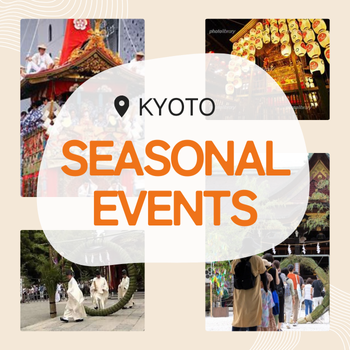– Authentic the way of tea –
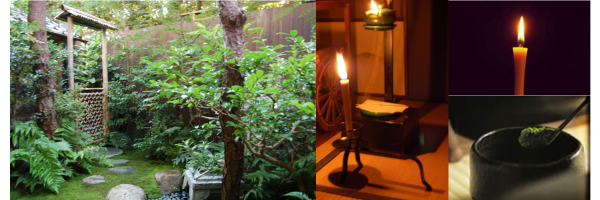
Experience a tea ceremony
to get away from the daily life.
All courses are completely private.
Time passes so slowly and quietly
Purified by the tea garden and tea room
Beautiful tea utensils with seasonal feeling
Host’s own cooking and main sweets
A magical night lit by candle lights
You can savor a special moment
Our hospitality is focused on only one couple
It ‘s your unforgettable special memory!
Afternoon Tea Ceremony Experience Course (A / B) in Kyoto
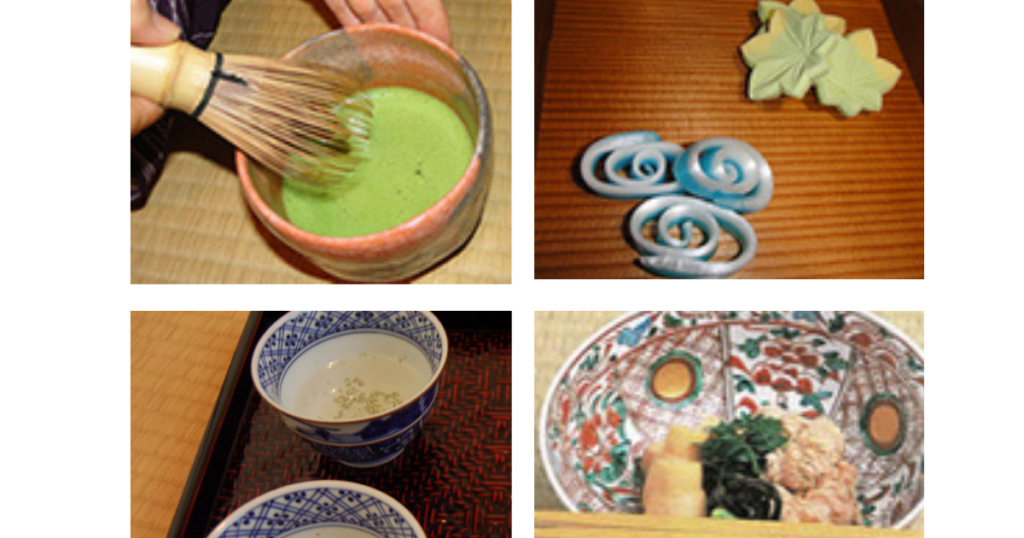
■Usucha or thin powdered green tea
It is the most common way to drink matcha and it is whisked into a fine foam on top.
■Higashi or delicate sweets
These sweets are usually made from traditional Japanese sugar and agar jelly etc.
■Meal
Rice, Miso Soup, Mukouzuke, Yakimono, Kounomono Read More
| A course | Thin powdered green tea and delicateme sweets, simple tea |
| Days | Tuesday, Wednesday, Thursday, Friday, Saturday, Sunday |
| Time | 14:00 / 15:30 / 17:00 |
| Duration | 1 hour |
| Participants | 2~5 people |
| Price | ¥5,000 per person |
| B course | Thin powdered green tea , delicate sweets , and Meal B |
| Days | Tuesday, Wednesday, Thursday, Friday, Saturday, Sunday |
| Time | 13:00 / 14:00 |
| Duration | 2 hours |
| Participants | 2~5 people |
| Price | ¥10,000 per person |
Evening Tea Ceremony Experience Course
(C / D / E / F)
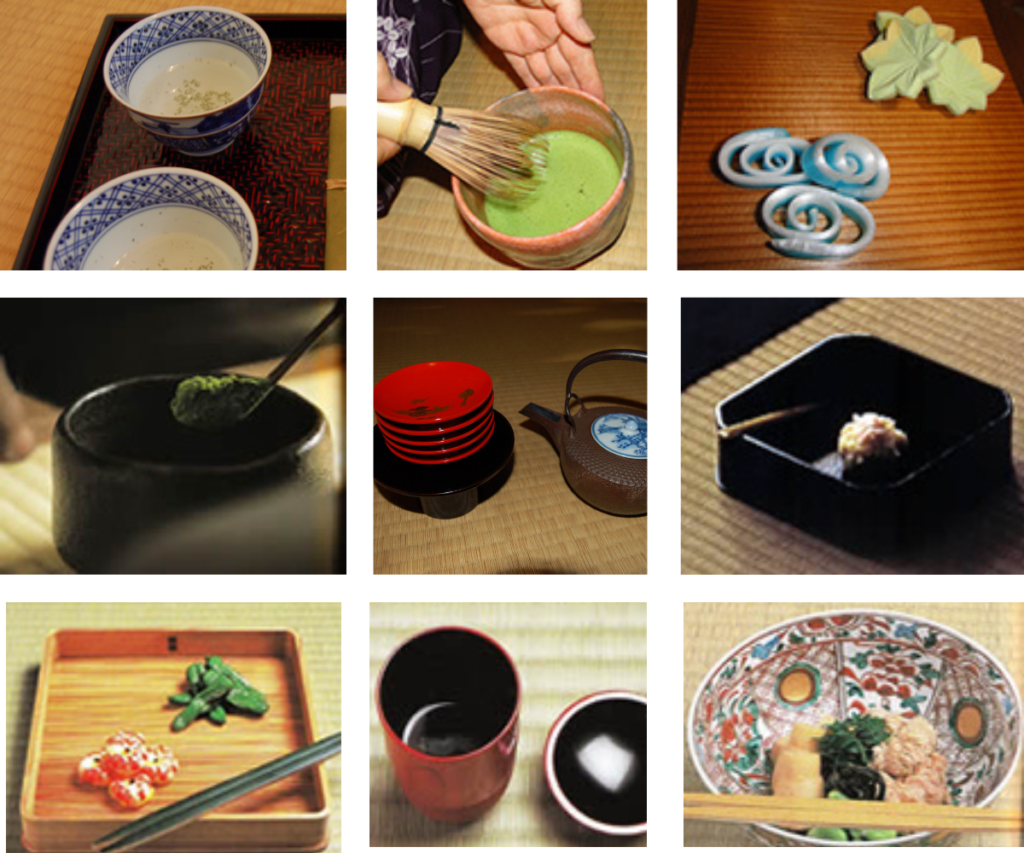
■Koicha or Thick tea
The host puts the tea powder for the number of guests (about 3 scoops of good quality tea powder per person) into the tea bowl.
■Omogashi or main soft sweet
The main moist sweet is conventionally served before drinking a koicha.
■Usucha and Higashi or delicate sweet
■Kosuimono, clear soup
Kosuimono is a small clear soup which is also called “hashiarai”.
■Hassun (two kinds of dishes) and Japanese sake
Food from “sea” and from “land”, together with a metal sake pourer.
■Meal, Japanese Sake Read More
| C course | Thick tea and thin tea with sweets (soft and delicate) |
| Days | Tuesday, Wednesday, Friday, Saturday, Sunday |
| Time | 17:30 |
| Duration | 1.5 hour |
| Participants | 2~5 people |
| Price | ¥8,000 per person |
| D course | Thin tea with delicate sweets, Kosuimono, Hassun and Sake |
| Days | Tuesday, Wednesday, Friday, Saturday, Sunday |
| Time | 17:30 |
| Duration | 1.5 hour |
| Participants | 2~5 people |
| Price | ¥8,000 per person |
| E course | Meal E, Hassun and Sake, Thick tea and thin tea with sweets (soft and delicate) |
| Days | Wednesday, Friday, Saturday, Sunday |
| Time | 17:30 |
| Duration | 2.5 hour |
| Participants | 2~5 people |
| Price | ¥15,000 per person |
F course | Meal F, Hassun and Sake, Thick tea and thin tea with sweets (soft and delicate) |
| Days | Wednesday, Friday, Saturday, Sunday |
| Time | 17:30 |
| Duration | 2.5 hour |
| Participants | 2~5 people |
| Price | ¥18,000 per person |
Haiken
<a viewing of the utensils>

In the tea ceremony, after tea is served, there is a viewing of the utensils. We call it Haiken in Japanese. Some of the utensils can be very old or valuable, and a host may have a lot of feelings or stories about them. It is important to treat the utensils with the same care as people. For the guests who do not know, I will explain how to view the utensils and show them how to do so. For those who wish to enjoy a Haiken, an additional
¥1,000 will be added to the price of the tea ceremony.
Monkou Experience
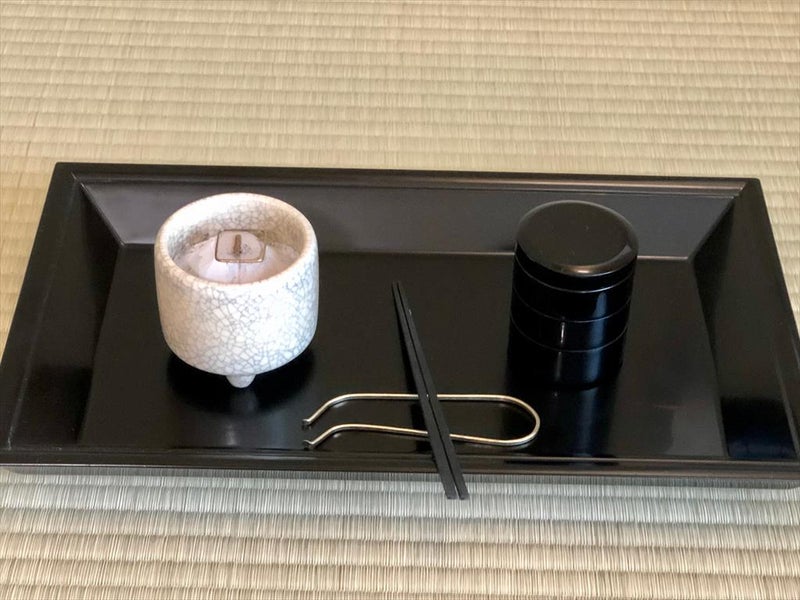
One of the practices of the tea ceremony is monkou (listening to rather than smelling incense). Monkou is to “listen to” fragrance with care and concentration. This is the best way to fully appreciate the fragrance of incense woods. For beginners, the host burns incense and the guests enjoy the fragrance of the incense. Any tea people who know the way of Monkou can also try an incense burner. For those who wish to enjoy a Monkou, an additional
¥3,000 will be added to the price of the tea ceremony.
Cancellation Cancellation is possible up to 48 hours before the reserved time.
If a cancellation is made on the day before the reserved day, half of the total cost will be refunded.
If a cancellation is made on the appointed day, there is no refund.
Payment We can not accept credit cards, so please pay with cash instead.
About
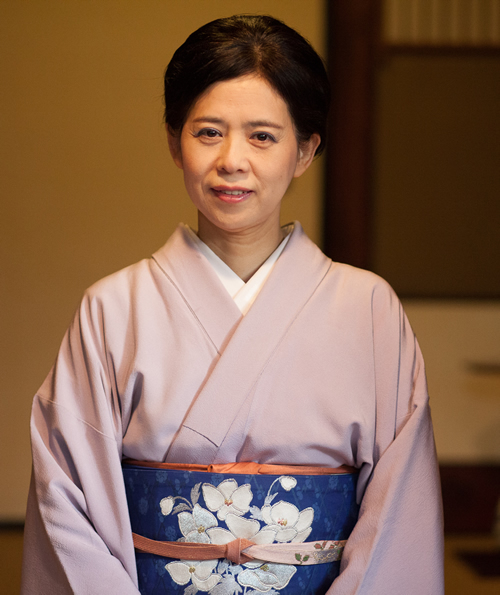
I opened my tea room Joukeian in Kyoto, so that others could experience the world of tea that has touched my life deeply.
I want to invite you to into this world of tea. I have been learning the way of tea since my childhood, being taught by my mother and other accomplished teachers. Although the tea ceremony has many rules, it is important that beginners relax and enjoy themselves. There are only a few things to remember, the most important being the expression of gratitude and respect for the host and other guests.
Everyone enjoys the aspects of the ceremony, which the host has carefully prepared, such as the tea room, tea garden, flower arrangement, tea utensils, tea, sweets and meal. The sweets are colorful, pretty, and reflects seasonal events. The taste of the sweets complements the bitterness of the tea.
Please come and experience the way of tea, an art which we have inherited from our ancestors, with your five senses.
I sincerely hope that you will be able to touch the heart of tea and that your visit here will stay with you as a memorable experience. Thank you.
JOUKEIAN host < Matsumoto Souko >
Tea Ceremony (The way of Tea)
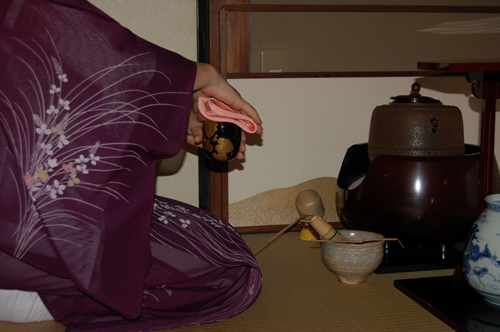
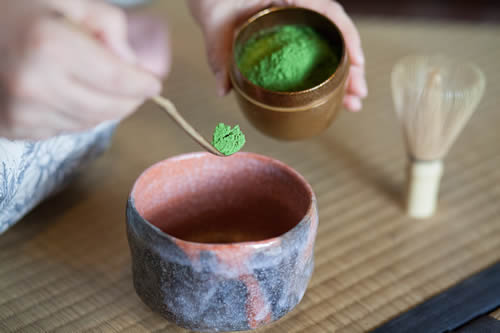
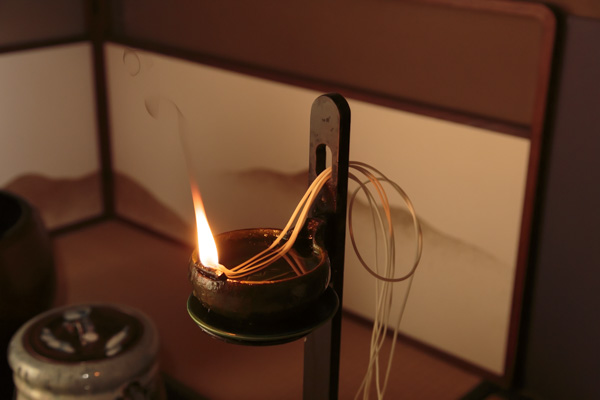
Tea ceremony is a one of Japan’s traditional culture, and it is connected with various fields of art and a highly developed spiritual culture has matured through a bowl of tea.
It is connected with various fields of art, including calligraphy, scroll mounting, flowers, ceramics, metal and iron work, bamboo and wood work, lacquerware, architecture, gardening, cooking, textiles. We might say that Chado is Japanese culture in condensed form.
Chado in Japanese is translated as “the way of tea” in English.
The spiritual aspect is important. The basic principles of Chado are expressed in Japanese “Wa, Kei, Sei, Jaku”. By learning these aspects, we seek to obtain peace of mind.
A temae in Japanese is a series of precise procedures followed to make a bowl of powdered green tea, serve it to a guest, and then to put the things away. It is one reason why the way of tea is recognized as a form of art. It is important to achieve gracefulness in the series of movements and one’s posture during the process.
However the temae is not merely a procedure for making and serving tea. Through the manners and movements of the temae, the practitioner deeply realizes the meaning of pursuing spiritual insight and deepening appreciation of art through the Chado.
The tea ceremony is not only about drinking tea. The heart of tea is also important. Through a bowl of tea, we do everything we can for the guest. The heart of tea is the heart of hospitality.

